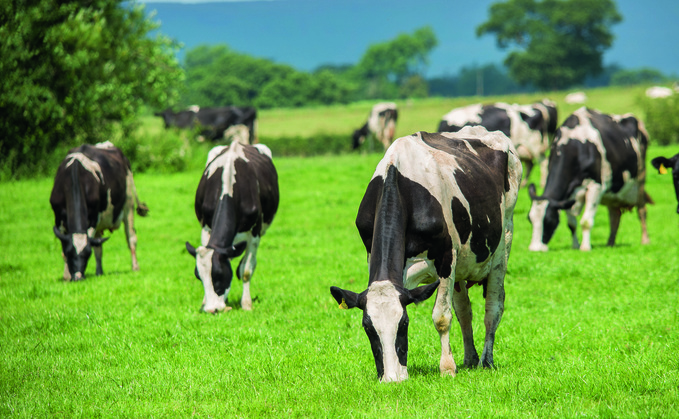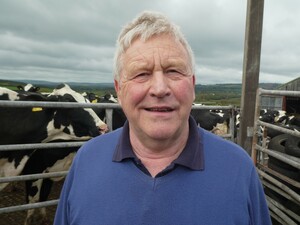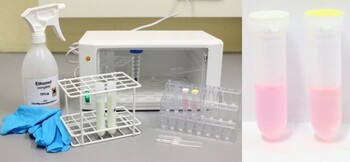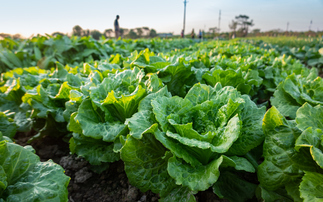
With the World Health Organisation declaring that AMR is one of the top 10 global public health threats facing humanity, working collaboratively to ensure antibiotic use is ‘as little as possible but as much as necessary' is now part of everyday vet: farmer decision making.
"We are all familiar with selective dry cow therapy which has rationalised the use of antibiotic tubes at dry off," says vet Andrew Biggs from the Vale Vet Group in Devon. "I feel it is better to say antibiotic use at dry off is now targeted at cows where it will bring benefit. As a consequence of this targeted approach, antibiotic use at dry off is significantly lower1 .

"But, to future proof antibiotic use in dairy cows, we now need to turn our attention to mastitis in the lactation phase," he adds. "Ensuring intramammary antibiotics are used responsibly, we also need to adopt an evidence-based approach to clinical mastitis therapy."
Antibiotic treatment should be directed where it's needed
Mr Biggs points out: "Mastitis is an inflammatory response by the cow which is most often triggered by an infection but, like many infections, the inflammation can often extend beyond the duration of the infection so tubing until the clots have gone is not justified. We are all familiar with the common symptoms of mastitis - a swollen and uncomfortable udder, clots in the milk, possibly a cow off her feed in severe cases. NSAIDs (non-steroidal anti-inflammatory drugs) regulate the cow's immune response to relieve pain, reduce inflammation and reduce clinical signs."
Mastitis during lactation is caused by a range of bacteria, categorised as environmental or contagious, depending on their origin and behaviour. Contagious pathogens – such as Staph. aureus or Strep. agalcatiae – tend to be persistent and can spread from cow-to-cow. Decades ago, they were the main cause of mastitis, but since the Five Point Plan was widely adopted, these pathogens are now well controlled in most herds, and national cell counts are much lower as a result.
Knowing the bug behind the mastitis case will help inform treatment decisions.
Environmental pathogens such as E. coli or Strep. uberis originate from the environment - most often from faeces. Mild or moderate E. coli mastitis cases tend to be short lived and will often self-cure as a result of the cow's immune response. These cases are effectively getting better despite the antibiotic tubes. On the other hand, some strains of Strep. uberis can become persistent and then have the ability to behave in a contagious manner.
"Knowing the bug behind the mastitis case will help inform treatment decisions and is known as Targeted Lactation Therapy (tLCT)," Dr Biggs explains. "Why use an antibiotic when It's not needed? If we can target antibiotic therapy to cows that need it, and give an NSAID in all cases, another huge stride will be made in our responsible use of antibiotics.

"The days of blanket treatment of lactating cows, or treating until the clots have gone is no longer justified," Andrew Biggs adds. "There are a range of cow-side tests which will reveal the problem pathogen in a matter of hours. Talk to your vet about their availability and use. All cows with mastitis deserve NSAID, and certain infections such as Strep. uberis or Staph. aureus also need prompt antibiotic treatment, but for mild or moderate E. coli cases (not sick cows), or cases where no bacteria are found ("no growths"), understand that an NSAID may be all that is needed."
Non-steroidal anti-inflammatory drugs (NSAIDs)
NSAIDs such as Metacam® have multiple actions on the body:
- Anti-inflammatory
- Anti-pyretic (reduce fever)
- Counter endotoxin-induced cellular damage
- Provide analgesia (pain relief).
Many farmers are now using NSAIDs, such as Metacam® , in all cases of clinical mastitis- mild, moderate, and severe- so improving cow comfort and recovery rates. Metacam® has been shown to improve cure rates and improve fertility in cows with mastitis, when used alongside standard antibiotic therapy2.
Tests
Cow-side tests such as MastDecide accompanied by Targeted Lactation Therapy (tLC) and NSAIDs for all cases can:
- Reduce use of antibiotic tubes
- Increase milk sold –less milk discarded
- Reduce the risk of bulk milk antibiotic failure
- Less milk with antibiotic contamination
- Less milk with antibiotic residues to dispose of.
- Maintain good cure rates
References:
1.
2. McDougall et al (2016) J Dairy Sci 99(3): 2026–2042
3. Schmenger et al (2020). Vet. Rec. 187(10) 401-401.
This post is funded by Boehringer Ingelheim Animal Health
























